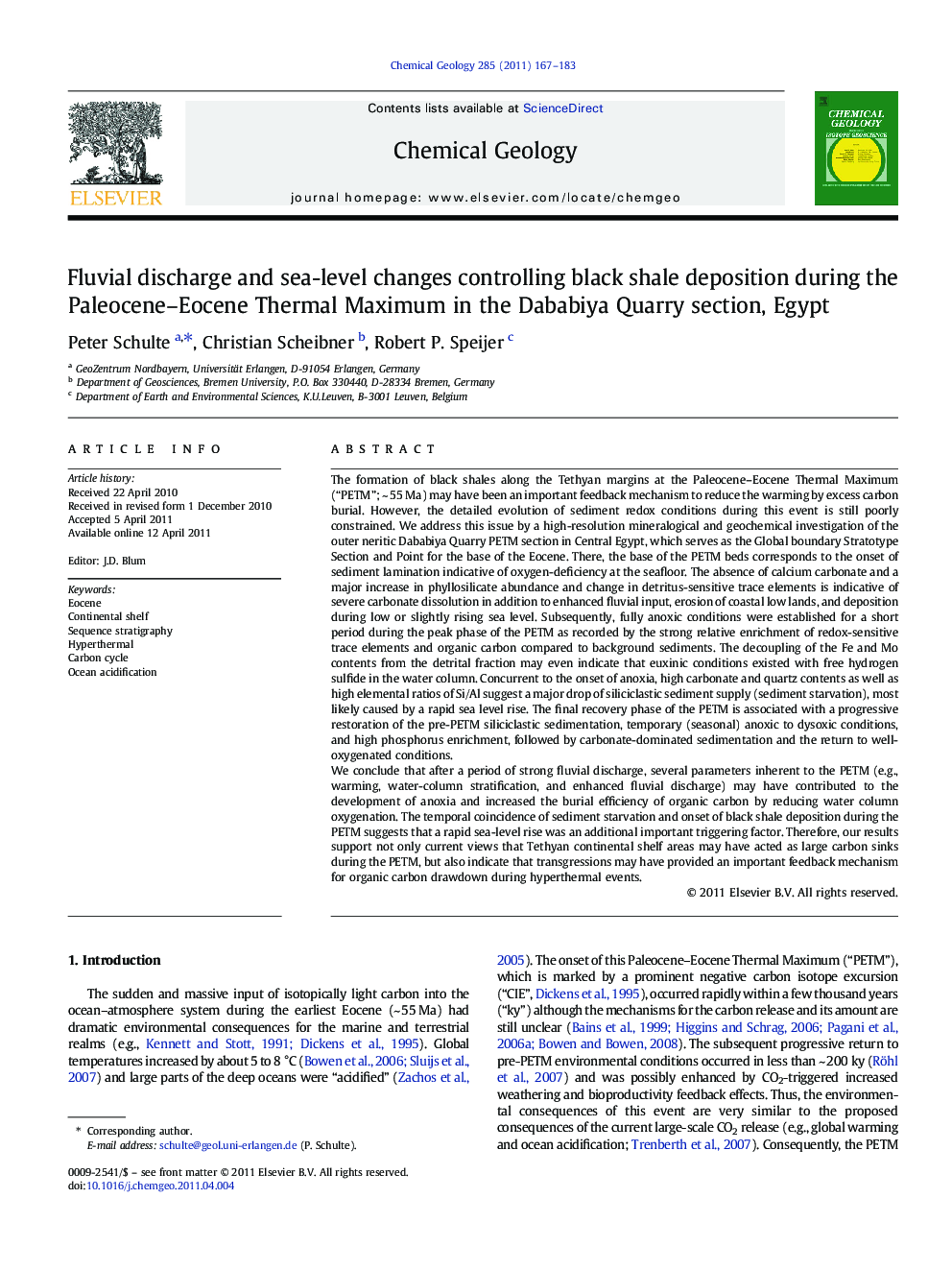| کد مقاله | کد نشریه | سال انتشار | مقاله انگلیسی | نسخه تمام متن |
|---|---|---|---|---|
| 4699680 | 1637666 | 2011 | 17 صفحه PDF | دانلود رایگان |

The formation of black shales along the Tethyan margins at the Paleocene–Eocene Thermal Maximum (“PETM”; ~ 55 Ma) may have been an important feedback mechanism to reduce the warming by excess carbon burial. However, the detailed evolution of sediment redox conditions during this event is still poorly constrained. We address this issue by a high-resolution mineralogical and geochemical investigation of the outer neritic Dababiya Quarry PETM section in Central Egypt, which serves as the Global boundary Stratotype Section and Point for the base of the Eocene. There, the base of the PETM beds corresponds to the onset of sediment lamination indicative of oxygen-deficiency at the seafloor. The absence of calcium carbonate and a major increase in phyllosilicate abundance and change in detritus-sensitive trace elements is indicative of severe carbonate dissolution in addition to enhanced fluvial input, erosion of coastal low lands, and deposition during low or slightly rising sea level. Subsequently, fully anoxic conditions were established for a short period during the peak phase of the PETM as recorded by the strong relative enrichment of redox-sensitive trace elements and organic carbon compared to background sediments. The decoupling of the Fe and Mo contents from the detrital fraction may even indicate that euxinic conditions existed with free hydrogen sulfide in the water column. Concurrent to the onset of anoxia, high carbonate and quartz contents as well as high elemental ratios of Si/Al suggest a major drop of siliciclastic sediment supply (sediment starvation), most likely caused by a rapid sea level rise. The final recovery phase of the PETM is associated with a progressive restoration of the pre-PETM siliciclastic sedimentation, temporary (seasonal) anoxic to dysoxic conditions, and high phosphorus enrichment, followed by carbonate-dominated sedimentation and the return to well-oxygenated conditions.We conclude that after a period of strong fluvial discharge, several parameters inherent to the PETM (e.g., warming, water-column stratification, and enhanced fluvial discharge) may have contributed to the development of anoxia and increased the burial efficiency of organic carbon by reducing water column oxygenation. The temporal coincidence of sediment starvation and onset of black shale deposition during the PETM suggests that a rapid sea-level rise was an additional important triggering factor. Therefore, our results support not only current views that Tethyan continental shelf areas may have acted as large carbon sinks during the PETM, but also indicate that transgressions may have provided an important feedback mechanism for organic carbon drawdown during hyperthermal events.
Research highlights
► Mineralogical and geochemical analysis reveal a complex depositional scenario during the PETM.
► Onset of the PETM is characterized by a period of enhanced fluvial discharge.
► During the peak warming of the PETM, fully anoxic (euxinic) conditions persisted.
► Anoxic conditions occur concurrent to sediment starvation (transgression).
► Rapid transgressions may have been an important feedback mechanism for carbon sequestration.
Journal: Chemical Geology - Volume 285, Issues 1–4, 22 June 2011, Pages 167–183